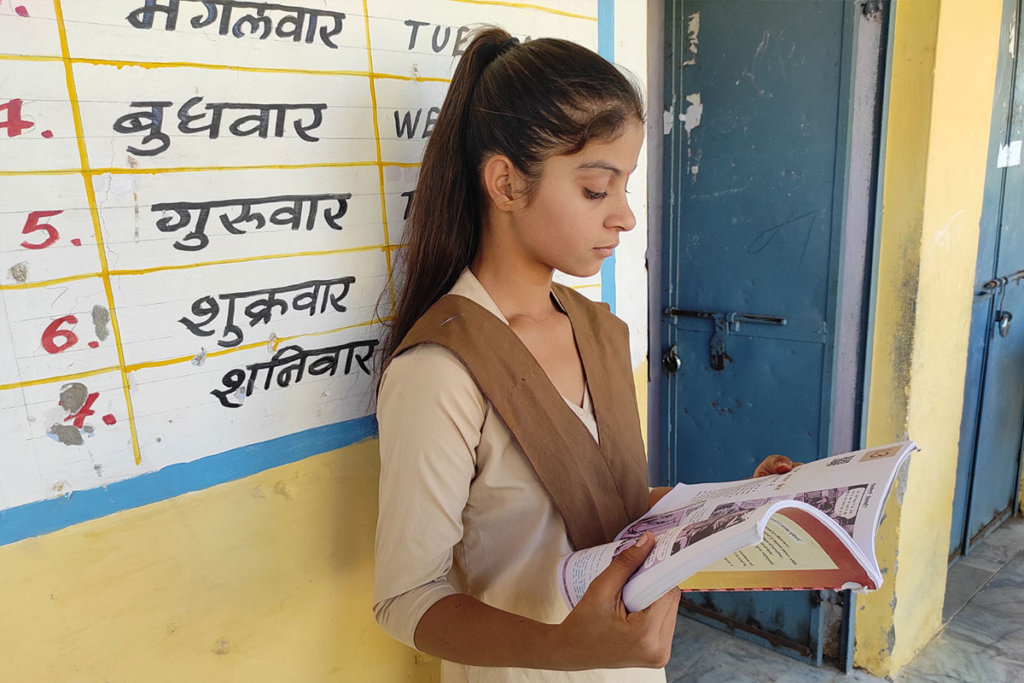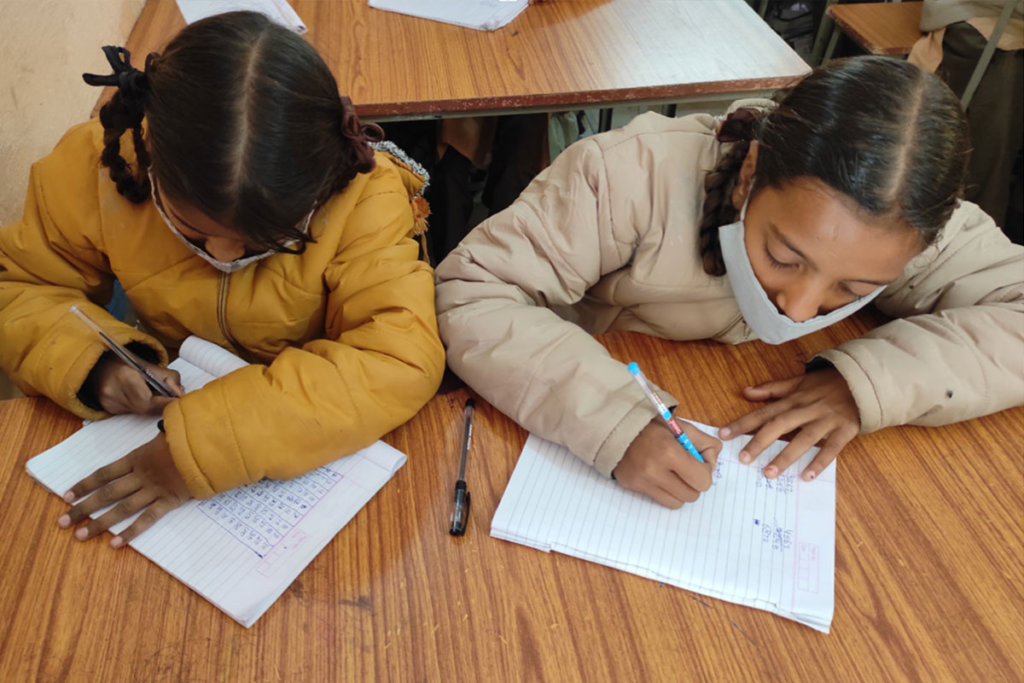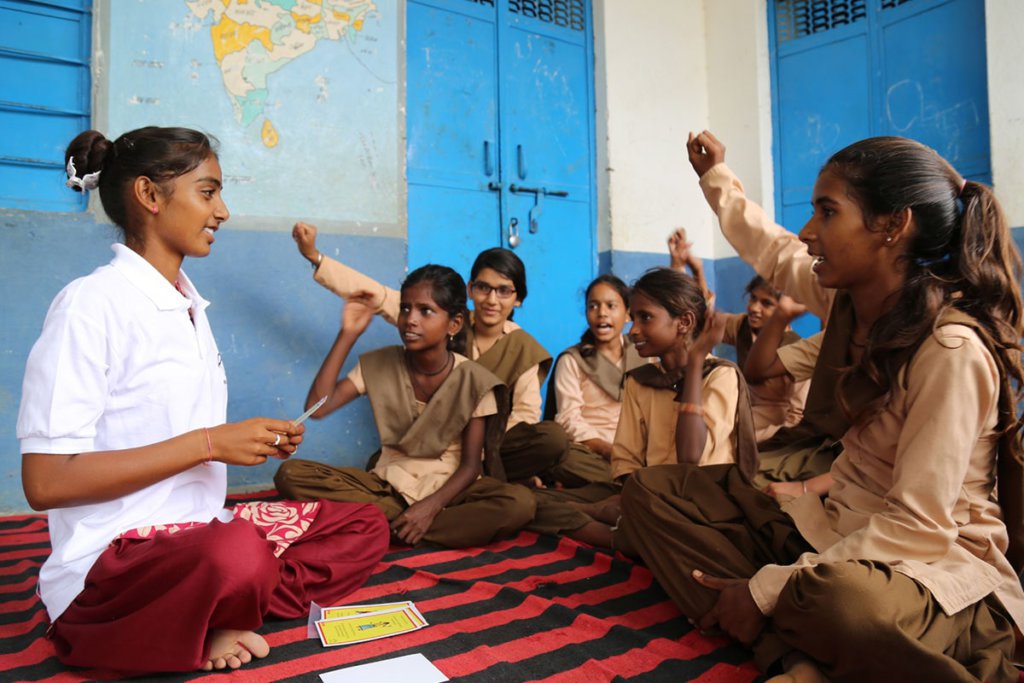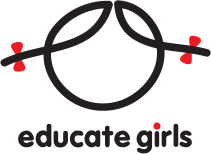When girls are safe, healthy, and empowered, they drive impactful changes in the world. They help in growing economies and strengthen communities. Yet, in any adverse situation, the needs and rights of girls are often ignored.
Girls’ education can be protective and transformative not only for them but also for communities. Ensuring girls’ education at all times is a powerful tool in advancing gender equality. Educating girls is a smart investment to help build more prosperous, fair, and adaptable societies.
In today’s blog, we will discuss 5 challenges that continue denying girls their Right to Education.
The evidence-based focus shared in this blog is not just to convince policymakers to invest more in girls’ education, but is equally addressed to all stakeholders, non-profits, and private institutions to keep experimenting with what works best to ensure quality education for girls around the world.
CHALLENGE 1: REDUCING VIOLENCE AGAINST GIRLS AND HELPING THEM LEARN IN CONFLICTS & EMERGENCIES
According to UNICEF, globally 26 million adolescent girls and females need humanitarian assistance. This global crisis is already affecting one in three women in their lifetime. Violence against women is one of the important Human Rights concerns. In times of emergencies, an uncounted number of girls are uprooted from their homes, removed from school, and are at risk of violence and forced marriage.
Hence, in times of conflicts and emergencies, girls of all ages are less likely to have access to quality education due to entrenched cultural, social, financial, and social barriers.
To support marginalized girls’ education during emergencies, we need to work on creating safe environments, improving data collection, and gathering political support for investing in girls’ education.
CHALLENGE 2: ENSURING SECONDARY EDUCATION FOR ADOLESCENT GIRLS

According to global statistics published by UN Women, just 39% of rural girls attend a secondary school which is remarkably less than rural boys (49%).
Education and training that adolescents receive in secondary school equip them with skills that are important to fully participate in society. Before we expect girls to take charge of their lives, we need to ensure that they get equal education opportunities. Secondary education helps develop a sense of self-worth and positive opinion. It empowers an individual to make their own decisions and create a better life for themselves.
Educating girls has been acknowledged as the most powerful source for breaking cycles of poverty in just one generation. Hence, ensuring that girls complete their secondary education should be one of the priorities of any country that aims to progress.
CHALLENGE 3: ENSURING QUALITY LEARNING

As per the report published by UNICEF, across the world, over 130 million girls are not going to school today and even the rest who are getting this opportunity are not able to achieve minimum proficiency in reading and Mathematics. This tells us that in the places where girls are going to school, there is a lack of trained teachers and teaching material which is making girls’ learning experience inadequate and uncompetitive.
Hence, today, the challenge is not just how to enroll underserved girls in schools but also to ensure quality learning for them.
To educate girls, we need to build gender-sensitive and safe classrooms besides involving skilled teachers who can encourage curiosities and support the aspirations of our girls. Contextual learning material enriched with local examples and delivered in local languages will also make learning more relatable for girls. The use of technology is also important as it will help in accelerating the process of providing girls with quality learning and will improve their exposure to several opportunities.
CHALLENGE 4: SMOOTH TRANSITION FROM SCHOOL TO WORK

One of the reasons why girls need to be educated is that they should be able to find livelihood opportunities for themselves. Hence, it is important that education provides that transition from school to work. Our curriculum must ensure to impart an array of skills and knowledge among girls so that they feel confident to take up good financial opportunities.
To financially support their families, often young girls are also forced into labor for petty money. Many try to manage school and work simultaneously where girls go to work before or after school, leaving less time for them to study. The differing financial needs often become too important that it also becomes a reason for girls to drop out of school. Hence, it is also important that we aware girls and their parents of the importance of education and the opportunities it offers.
CHALLENGE 5: EMPOWERING GIRLS TO LEAD

Sustainable Development Goals (SDGs) not only include gender-specific actions and statistics, but also an entire goal dedicated to gender parity. The factors that shaped this Sustainable Development target are “eliminating all forms of violence against females in public and private spheres, including sexual trafficking and other types of exploitation”.
Today, one of the biggest moral crises is that so many women around the world, including the developed nations, face discriminatory laws, domestic violence, economic barriers, a lack of equal pay, and many more. Hence, we need to advocate for girls’ education to empower them to fight for themselves.
These challenges need to be addressed to highlight the voices of girls coming from the underserved sections of society. Without acting on these we cannot promise girls their Right to Education. Collectively, all the stakeholders need to reimagine education for marginalized girls.
To make an effort for this cause, several hands must join together. We cannot do this alone and your support is needed. To help overcome these challenges that are hindering the path of education for marginalized girls, donate now!

